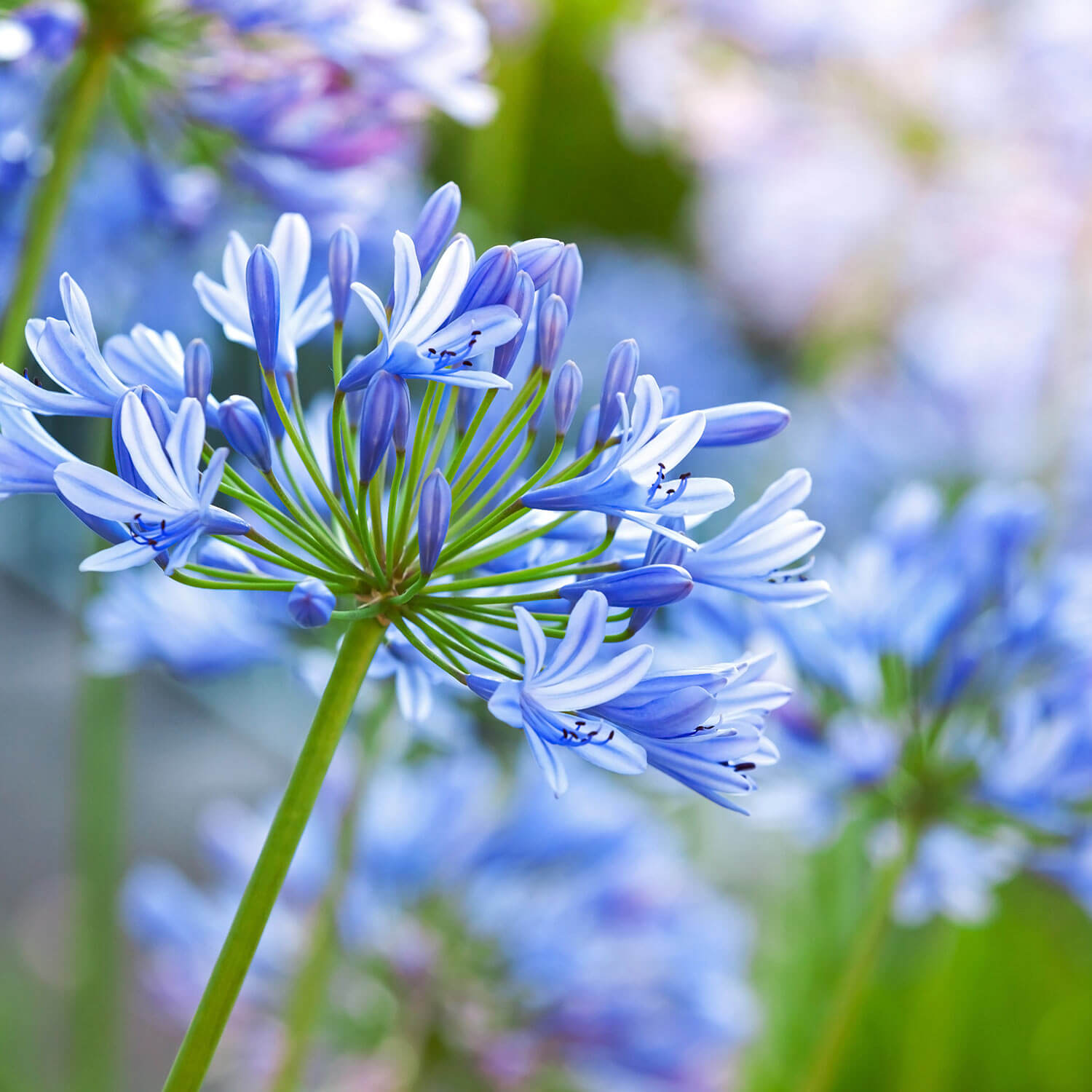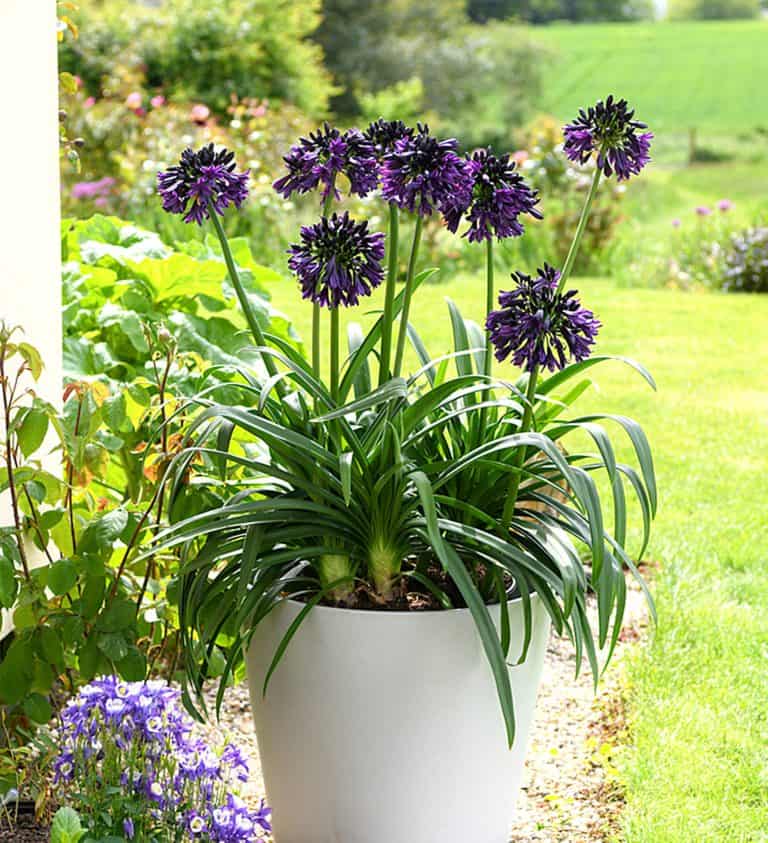Unleashing the Secret to Effective Agapanthus Growing: Idea for a Flourishing Yard
In the realm of gardening, cultivating agapanthus successfully calls for a strategic approach that encompasses numerous aspects of plant treatment. By understanding the nuances of agapanthus farming, one can produce a setting where these plants thrive and bloom perfectly.
Planting Agapanthus: Finest Practices
When growing Agapanthus, appropriate dirt prep work is necessary for making certain effective growth and growth of these attractive blossoms. Agapanthus, generally understood as Lily of the Nile or African lily, prospers in well-draining soil with a somewhat acidic to neutral pH degree - Agapanthus. Before growing, it is essential to change hefty clay dirts with organic issue such as garden compost or peat moss to enhance water drainage and offer important nutrients for the plants
To grow Agapanthus, pick a place that gets full sunshine to partial shade, as this will certainly promote healthy development and bountiful blooming. Dig an opening two times the diameter of the plant's root sphere and position the Agapanthus at the exact same deepness it was formerly expanding. Delicately backfill the hole with soil, weighing down securely to remove any air pockets around the roots.
Water the recently planted Agapanthus thoroughly and remain to maintain the dirt equally moist, particularly during the plant's energetic expanding period. Agapanthus. Applying a balanced fertilizer once a month can additionally support the plant's growth and blooming. By following these best methods for planting Agapanthus, you can create a spectacular display of these fascinating flowers in your garden
Suitable Dirt Conditions for Agapanthus
For optimal development and blooming success of Agapanthus plants, making sure the soil problems are perfect is vital. Agapanthus prospers in well-draining dirt with a somewhat acidic to neutral pH degree varying from 6.0 to 7.0. This sort of soil enables adequate water drain, avoiding waterlogging which can lead to root rot. To boost dirt drain, think about including natural issue such as compost or peat moss when preparing the growing site. Additionally, Agapanthus prefers soil that is rich in nutrients, so including a well balanced fertilizer during the expanding season can promote healthy and balanced development and lively flowers.

Watering and Fertilizing Tips
To make sure healthy and balanced growth and dynamic blossoms, appropriate watering and feeding strategies are essential for successful Agapanthus cultivation. Agapanthus plants gain from normal watering, especially throughout the expanding period. It is advised to water deeply when a week, guaranteeing the dirt is moist however not saturated. Throughout warm weather condition or in pots, more constant watering might be essential to avoid the soil from drying completely.
When it pertains to fertilizing Agapanthus, a balanced plant food with equal parts nitrogen, phosphorus, and potassium can be applied in the spring to advertise healthy growth and flowering. Slow-release fertilizers are excellent for providing nutrients slowly over a prolonged period. Prevent over-fertilizing, as this can cause excessive vegetation development at the expense of flowers.
In addition, incorporating natural issue like compost into the soil can enhance nutrient degrees and boost dirt framework, assisting in the overall wellness of the Agapanthus plants. By following these watering and fertilizing pointers, garden enthusiasts can ensure their Agapanthus plants thrive and useful content create spectacular displays of blossoms.
Pruning and Deadheading Methods
Appropriate trimming and deadheading strategies play a vital role in preserving the health and aesthetic appeals of Agapanthus plants, enhancing the vital practices of watering and feeding for successful farming. Trimming Agapanthus involves removing spent blossom heads, dead or yellowing leaves, and total shaping of the plant to advertise far better development. Deadheading, the procedure of removing discolored flowers, not only enhances the plant's look but additionally urges additional growing.
When deadheading Agapanthus, it is recommended to trim off the flower stem at the base using sharp, clean shears. This procedure reroutes the plant's power from seed production back into root and vegetation development, advertising a healthier and a lot more robust plant. Regular deadheading can prolong the flowering duration of Agapanthus and avoid self-seeding, which can result in congestion.
In regards to trimming, Agapanthus usually take advantage of a light trim after blooming to clean up the plant and motivate fresh growth. Reducing back the spent blossom stems and eliminating any kind of dead or broken vegetation helps preserve the plant's vitality and total appearance. However, it is vital to avoid cutting right into the crown of the plant, as this can weaken its health.

Protecting Agapanthus From Pests and Diseases
Executing reliable parasite and condition monitoring approaches is vital to protecting the health and vitality of Agapanthus plants in farming. One common pest that influences Agapanthus is the Agapanthus borer, a caterpillar that passages right into the plant, creating damage to the fallen leaves and flowers.
Along with pests, Agapanthus are prone to conditions such as root rot and fungal leaf areas. These concerns can typically be prevented by making certain appropriate water drainage and avoiding overwatering. If indicators of condition show see page up, affected components of the plant need to be without delay gotten rid of to stop more spread. Fungicides might also be used as a treatment action, adhering to the maker's instructions thoroughly. By remaining attentive and resolving parasite and condition concerns promptly, garden enthusiasts can assist their Agapanthus grow and flourish.

Verdict
Finally, effective growing of agapanthus calls for proper planting techniques, excellent soil conditions, ample watering and feeding, normal trimming and deadheading, and defense from bugs and conditions. By adhering to these methods and suggestions, garden enthusiasts can make sure a flourishing yard filled with attractive agapanthus blossoms. Agapanthus. Keep in mind read the article to keep constant care and attention to detail to advertise the wellness and long life of these spectacular plants
When growing Agapanthus, correct dirt preparation is essential for making sure effective growth and growth of these gorgeous blossoms.Water the freshly planted Agapanthus thoroughly and continue to keep the dirt uniformly damp, particularly during the plant's energetic growing period.For optimal development and growing success of Agapanthus plants, making certain the dirt problems are excellent is critical. When planting or hair transplanting Agapanthus, make sure the soil is well-prepared to supply the needed foundation for the plants to develop themselves efficiently. One common pest that affects Agapanthus is the Agapanthus borer, a caterpillar that tunnels into the plant, triggering damage to the flowers and fallen leaves.